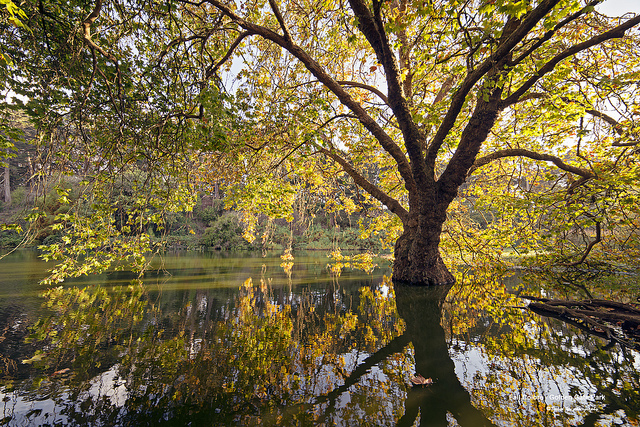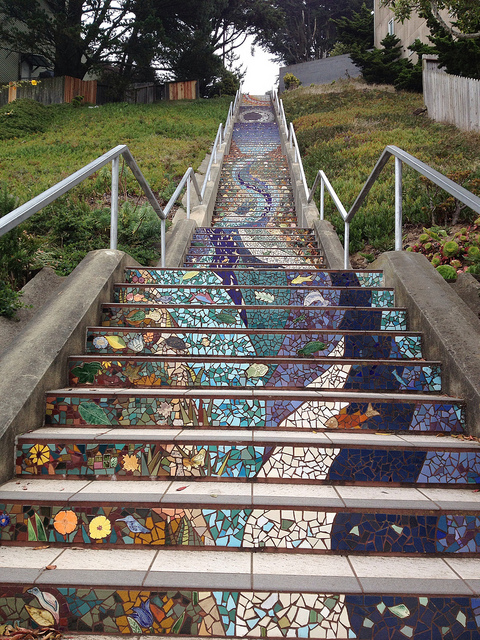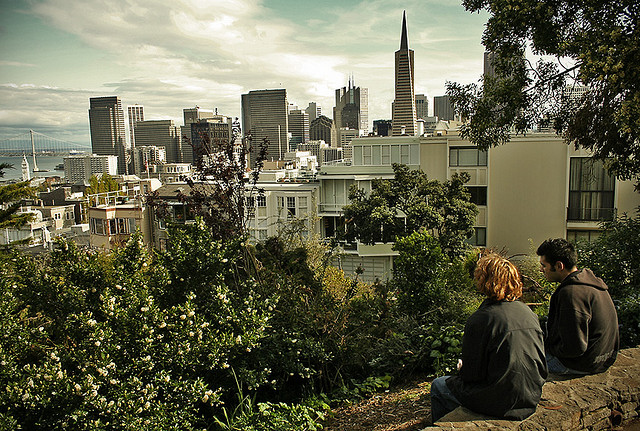Cultural Landscapes
 |
What is a Cultural Landscape?
A cultural landscape is a place with many layers of history that evolves through design and use over time. A cultural landscape embodies the associations and uses that evoke a sense of history for a specific place. Physical features of cultural landscapes can include trees, buildings, pathways, site furnishings, water bodies – basically any element that expresses cultural values and the history of a site. Cultural landscapes also include intangible elements such as land uses and associations of people that influenced the development of a landscape. Cultural landscapes include neighborhoods, parks and open spaces, farms and ranches, sacred places, etc.
Cultural landscapes include tangible and intangible characteristics, including:
- Natural systems and features
- Spatial organization
- Land use
- Cultural traditions
- Cluster arrangement
- Circulation
- Topography
- Vegetation
- Buildings and structures
- Views and vistas
- Constructed water features
- Small-scale features
- Archeological sites
Similar to buildings, cultural landscapes are significant for their association with an historic event, activity, or person.
Why Cultural Landscapes are Important
 Cultural landscape studies focus on how the importance of place in our heritage requires recognition beyond the structures of the built environment.
Cultural landscape studies focus on how the importance of place in our heritage requires recognition beyond the structures of the built environment.
Beginning in the 1920s, through the writings of cultural geographers, the concept of cultural landscapes was created through studies of how humans influence physical landscapes in subtle and overt ways.
Popularized in the 1950s through the writings of J.B. Jackson and the work and writings of modern landscape architects, landscape design began to be recognized and understood as equivalent to architecture in shaping the urban environment.
Cultural landscape preservation seeks to recognize significant landscape features and place-making as a way to understand evolving community and cultural values. Everywhere people live and move about they interact with their environment, creating cultural values through the use and transformation of their surroundings.
Examples of cultural values associated with landscape features include:
- Stairs winding down from a neighborhood to a fruit vendor that facilitates the meeting of a grocer and resident.
- A particular vista that encourages nearby residents to gather, eventually establishing a park that the neighborhood treasures.
- Trees blooming during their annual flowering season that enliven a local community to create a celebratory festival that brings the community together and encourages tourism to the region.
- A downtown plaza where community members gather to celebrate, mourn, and collaborate.
 Guidelines for cultural landscape preservation were first documented in three pivotal documents published in the 1990s:
Guidelines for cultural landscape preservation were first documented in three pivotal documents published in the 1990s:
- Preservation Brief 36: Protecting Cultural Landscapes: Planning, Treatment and Management of Historic Landscapes (1994);
- The Secretary of the Interior's Standards for the Treatment of Historic Properties with Guidelines for the Treatment of Cultural Landscapes (1996); and
- Guide to Cultural Landscape Reports: Contents, Process and Techniques (1998).
Case Study: San Francisco's Civic Center Cultural Landscape Inventory
The Civic Center Cultural Landscapes Inventory project was undertaken by the City of San Francisco from 2012 to 2014 to document the historic landscape features of the existing Civic Center Historic District. The Civic Center is designated as a National Historic Landmark District – the highest designation of historic resources in the United States. The Civic Center is also designated at the local level as a San Francisco Landmark District (under Article 10 of the Planning Code). Most of San Francisco’s major government and cultural institutions are located in the Civic Center Historic District including City Hall, San Francisco Public Library, War Memorial, United Nations Plaza, and others.
The Civic Center is not just a collection of buildings, but an important center of activity for the City. The Civic Center includes government and cultural institutions, buildings, and public open spaces that connect these various uses. The Civic Center Historic District is association with events and architectural styles connected to the Panama- Pacific International Exposition, the Beaux Arts Civic Center Plan, the formation of the United Nations, the United States peace treaty with Japan, and numerous national-level civic protests and social movements.
The Civic Center Cultural Landscape Inventory provides information about the historic landscape features of the Civic Center and how they relate to important aspects of our shared history. The CLI will inform the short and long-term treatment and management goals of the Civic Center cultural landscape, based on the objective of preserving the overall historic character of the district while allowing for changes to improve the functionality of areas and individual components of the district.
The CLI serves as a framework for future cultural landscape studies in the City’s existing and potential historic districts to inform planning decisions on a larger scale.
Learn more about San Francisco's Civic Center Cultural Landscape Inventory here.
Contact
For more information please contact:
Gretchen Hilyard
Preservation Planner
SF Planning Department
1650 Mission Street, Suite 400
San Francisco, CA 94103
Direct: 415-575-9109
Fax: 415-558-6409
gretchen.hilyard@sfgov.org
Photograph Sources
- David Yu, "Fall Colors - Golden Gate National Park," November 1, 2013
- Awesome Jooli, "Midway Down Mosaic," July 14, 2013
- Obeck, "View from Telegraph Hill," April 10, 2006